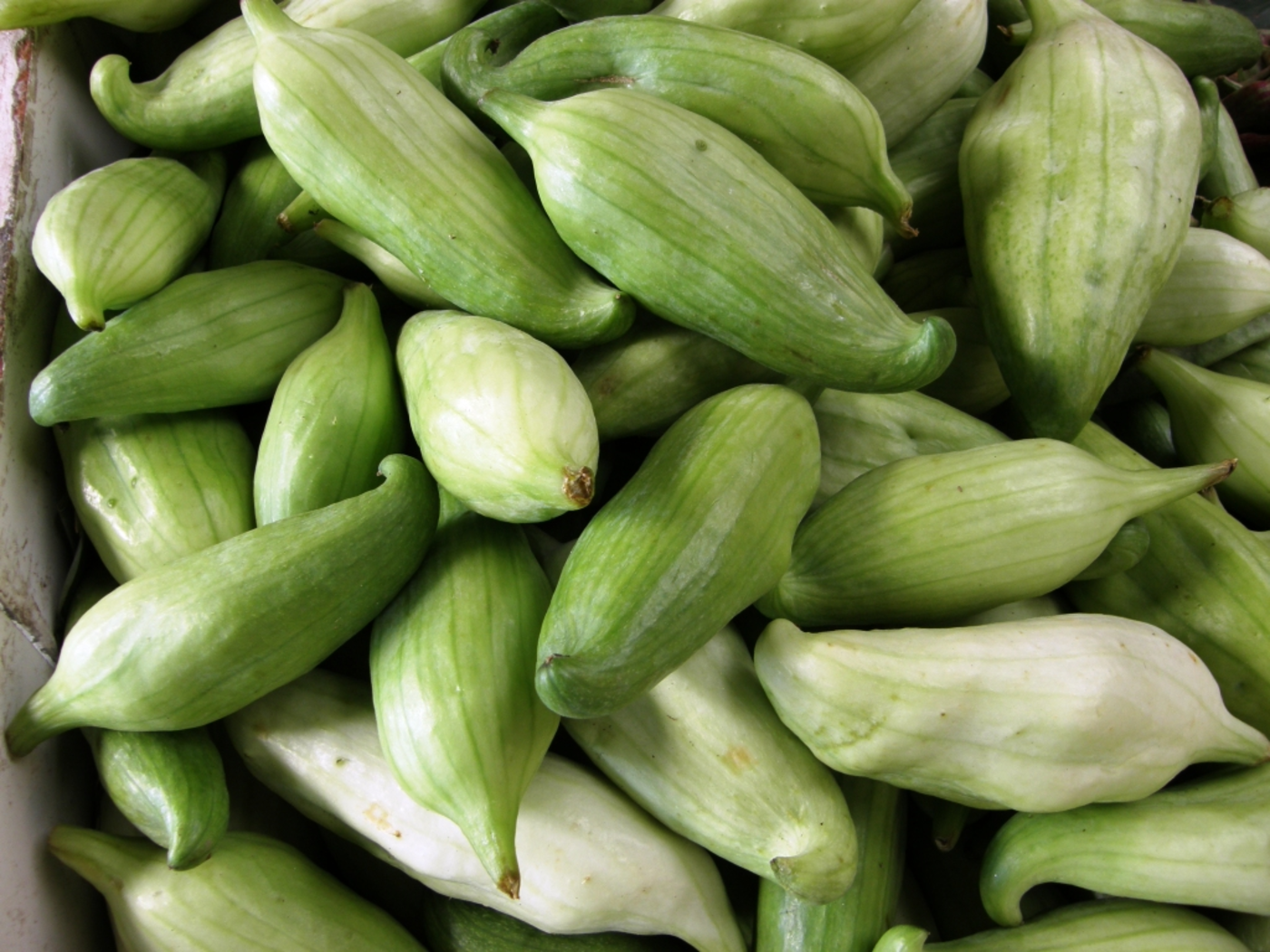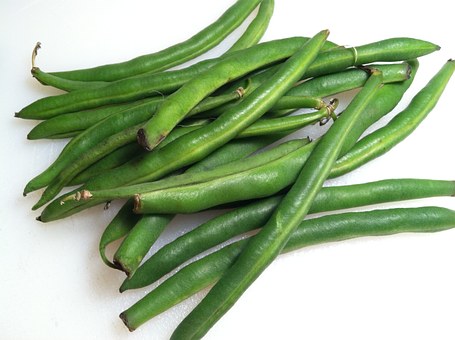Growing Achojocha: A Gardener's Guide to Healthy Plants

Growing Achojocha
Growing achojocha rewards gardeners with fast-growing foliage, abundant harvests, and a taste somewhere between cucumber and green pepper. Plant achojocha in fertile soil once frost danger passes, provide sturdy supports for climbing, and water regularly to keep soil moist. With minimal care, this intriguing South American vine delivers unusual flavors for soups, stir-fries and stuffed dishes—keep reading to discover the simple ways to cultivate healthy, productive achojocha plants.
Cheatsheet: Achojocha Growing Made Simple
🌱 Climate & Location
- Plant after last frost: soil 65-85°F (18-29°C)
- Choose full sun (6+ hrs)
- Thrives in USDA 9-11 / min. 50°F (10°C) nights
⚒️ Tools and Products You'll Need
- Seeds or cuttings
- Compost or aged manure
- Trellis or fence (for climbing)
- Mulch
- Watering can or drip system
🌿 Soil & Feeding
- Rich, well-draining soil; pH 6.0–7.3
- Add compost before planting
- Top-dress with compost mid-season
- Mulch to lock in moisture
💧 Water & Care
- Keep soil moist but not soggy
- Water early mornings
- Trellis vines for airflow & easy harvest
- Pinch tips to control size
🐛 Pests & Problems
- Resists most pests
- Watch for aphids, snails
- Encourage beneficial insects 🐞
- Rotate spot each year
🍃 Harvest & Yield
- Ready in 80–120 days
- Pick pods young (<3 in/7 cm) for best taste
- Yields up to 5 lbs (2.2 kg) per plant
- Pods, seeds, leaves edible
🥗 Nutrition & Self-Sufficiency
- High in vitamin C, fiber, antioxidants
- Self-seeds; save seeds for next year
- Low calorie & versatile in cooking
Growing Achojocha: A Gardener’s Guide to Healthy Plants
What is Achojocha?
Achojocha (Cyclanthera pedata), called “stuffing cucumber” or Caygua, is a vining annual from the Andean cloud forest, cherished for its crisp, cucumber-chayote flavored seed pods and edible young leaves.
I first spotted achojocha at a farmers’ market in Cusco, Peru, piled next to rocoto peppers. Local growers claimed, “these vines practically laugh at pests” — after a few seasons, I see why.
The pods taste faintly sweet, best harvested young before seeds harden. Left longer, they resemble soft-skinned, ridged peppers stuffed and baked throughout South America.
Starting Achojocha from Seed
Sow achojocha seed after all danger of frost passes and nighttime lows top 54°F (12°C).
Soak seeds overnight in lukewarm water. Germination runs slow (2-4 weeks) if nights dip below 60°F (16°C).
I usually sow indoors in 4-inch (10-cm) pots, then harden off seedlings. Outdoor direct seeding works once soil feels like a warm loaf of bread to the touch.
- Plant seeds ½ inch (1.5 cm) deep
- Expect seedling emergence within 10-21 days
- Pinch first vines at 12 inches (30 cm) tall for bushier growth
Soil, Sun & Watering
Achojocha craves rich, loose soil with steady moisture. Sandy loam, amended with compost or aged manure, yields the best pod set.
It thrives in full sun but tolerates part-day shade, especially where summer heat scorches other cucurbits. In my experience, plants set more fruit in cooler summers than in ovenlike heat.
Water deeply each week. Let the top inch (2.5 cm) dry between soakings. Mulch with straw or leaf mold to keep roots cool and suppress weeds.
Trellising Tips
Achojocha vines wind fast and wild—expect up to 15 feet (4.5 m) of growth. Give them a sturdy trellis or netting, at least 5 feet (1.5 m) tall, and train tendrils every few days.
Pods hang like mini blimps, easy to miss under foliage. I missed a pod last year and it ballooned to the size of a squash—best picked young for flavor and tenderness.
Fertilizing and Maintenance
Topdress with compost or a 5-10-10 (NPK) granular fertilizer once vines start to run. Too much nitrogen pushes leafy growth instead of pods.
Remove overcrowded shoots or yellowed leaves for air circulation. Achojocha shrugs off most pests; occasional aphids or whiteflies wash off with a morning shower from the hose.
“Trials at the International Potato Center (CIP) found achojocha suffered fewer pest issues than cucumber or squash, and outyielded both in marginal soils.” — Cusco Agricultural Research Station, 2021
Pollination and Production
Achojocha sets both male and female flowers. Bees adore the small blooms, but I’ve hand-pollinated with a paintbrush during cool, rainy stretches for bigger yields.
Pods reach picking size in 55-85 days from sowing. Harvest once pods hit 2–5 inches (5–12 cm), pale green, before seeds harden.
Harvest and Storage
Pick pods regularly for the plant to keep producing. Store in the fridge, unwashed, in a paper bag for up to a week.
Excess harvest? Slice and freeze, or try pickling—a trick I learned from Bolivian friends, perfect for stuffing with cheese and herbs for winter feasts.
Culinary Uses
Raw, achojocha snaps like a mild cucumber. Stir-fry with garlic, toss in salads, or stuff with spiced grains and bake.
The young leaves and tips, sautéed, taste like spinach with a wise, mountain-tomato flavor.
Common Questions about Growing Achojocha
- Is Achojocha Perennial? Only in frost-free zones (USDA 10-11); treat as annual elsewhere.
- Best Varieties? Look for 'Slipper Gourd' or 'Peruvian Light Green' from specialty seed catalogs. Check Baker Creek or Rare Seeds UK for reliable stock.
- Pest Pressure? Rare. Occasional leaf miners or flea beetles—row cover solves that if needed.
Comparing Achojocha to Other Garden Treasures
- Achojocha vs. Chayote: Faster, easier starter in cool summers; chayote prefers tropical heat.
- Achojocha vs. Cucumber: Less powdery mildew trouble, more forgiving of irregular water.
- Achojocha vs. Bitter Melon: Sweeter, no bitterness, fewer pest headaches.
Resources & Where to Find Achojocha Seeds
Quality seed sources: Baker Creek Heirloom Seeds (US), Real Seeds (UK), SeedSavers Exchange. Rare, but popping up in demand thanks to rising interest in Andean crops (FAO, 2022: global “neglected crops” market up 18% year over year).
Each season with achojocha feels a little different. Satisfying and low maintenance, these vines set the table with both beauty and flavor. For personalized tips on growing achojocha (or anything else), I recommend Taim.io — the app tailors instructions for your climate, soil, and sun, which is worth its weight in gold by late July.
Frequently Asked Questions About Growing Achojocha
What type of soil best supports achojocha growth?
Achojocha thrives in rich, well-draining soil containing abundant organic matter. Before planting, incorporate compost or aged manure to enrich the soil structure and provide essential nutrients.
How much sunlight does achojocha require?
The plant flourishes under full sun to partial shade, ideally receiving at least six hours of direct sunlight daily. In hotter climates with intense sun exposure, partial afternoon shade benefits leaf health and growth.
What watering schedule is optimal for achojocha plants?
Achojocha plants appreciate consistent, moderate watering. Aim for approximately one inch (2.5 cm) of water per week, supplying moisture evenly to maintain soil lightly moist but never waterlogged.
Should I provide support structures for achojocha vines?
Yes, since achojocha grows vigorously and climbs readily, providing sturdy vertical supports or trellises aids air circulation and encourages healthier foliage. Set up supports early in the growing season to minimize disturbance.
When can achojocha fruits typically be harvested?
Harvest generally begins approximately 75–90 days after planting. Harvest pods promptly once they reach 2–3 inches (5–7.5 cm) in length for optimal tenderness, flavor, and texture.
What common pests or diseases affect achojocha?
Achojocha remains relatively pest-resistant but occasionally attracts aphids or spider mites. Regularly inspect plants and apply gentle control methods, such as insecticidal soap sprays. Avoid overhead watering to prevent fungal problems.
How can I encourage continued fruit production?
Regular harvesting promotes continuous fruiting by signaling the plant to produce more flowers and pods. Maintain consistent watering and periodically apply a balanced organic fertilizer during active growth periods to sustain productivity.
Growing Achojocha rewards patience and a bit of grit. Give it sun, a sturdy trellis, and steady moisture, and this vigorous vine will repay you with crisp, cucumber-like pods and lush greenery. Mind the pests, keep the soil rich, and don’t be shy about harvesting—young pods taste best. If you’re after more unusual edibles, check out this guide on growing achocha for deeper details. With a little attention, achojocha will become a staple—proof that the best flavors sometimes come from the edges of the familiar garden plot.
The Homesteader’s Take: Achojocha for Nutritional Self-Sufficiency
Optimal Yield Strategies
- Interplant achojocha with corn or trellis beans: maximizes space, encourages pollination, and improves soil fertility.
- Harvest regularly every 2-3 days to stimulate continuous pod production, keeping plants productive until first frost.
- Allow select pods to mature fully (yellow-brown pods): ensures seed harvest for self-sufficient planting next season.
Achojocha Nutrition Snapshot
- Rich in dietary fiber: supports digestive health.
- Contains antioxidants (flavonoids, polyphenols): helps cellular health.
- Valuable vitamin C source: 55mg per 100g fresh pod (approximately 92% daily recommended intake), benefiting immune system.
Preserving Achojocha for Year-Round Consumption
- Dehydrate: Slice thinly and dry pods at 135°F (57°C) for 6–8 hours; store airtight in cool dark area up to 12 months.
- Pickle: Preserve pods in vinegar-brine solution; shelf-stable for months, enhances flavors for meals.
- Freeze: Blanch sliced pods 2 minutes, then quick-freeze to preserve texture; frozen pods viable up to 9 months.
Livestock Integration Benefits
Achojocha foliage acts as nutrient-dense animal fodder for chickens, goats, rabbits; leaves provide supplemental iron, calcium, protein, supporting homestead feed sustainability.
Composting and Soil Improvement
Excess foliage and spent vines compost easily, contributing nitrogen-rich matter for subsequent planting cycles and overall soil vitality.
Heading 1
Heading 2
Heading 3
Heading 4
Heading 5
Heading 6
Lorem ipsum dolor sit amet, consectetur adipiscing elit, sed do eiusmod tempor incididunt ut labore et dolore magna aliqua. Ut enim ad minim veniam, quis nostrud exercitation ullamco laboris nisi ut aliquip ex ea commodo consequat. Duis aute irure dolor in reprehenderit in voluptate velit esse cillum dolore eu fugiat nulla pariatur.
Block quoteOrdered list
- Item 1
- Item 2
- Item 3
Unordered list
- Item A
- Item B
- Item C
Bold text
Emphasis
Superscript
Subscript
Find out which plants will thrive in your garden!
Answer a few fun questions and get custom plant recommendations perfect for your space. Let’s grow something amazing together!

start your season





